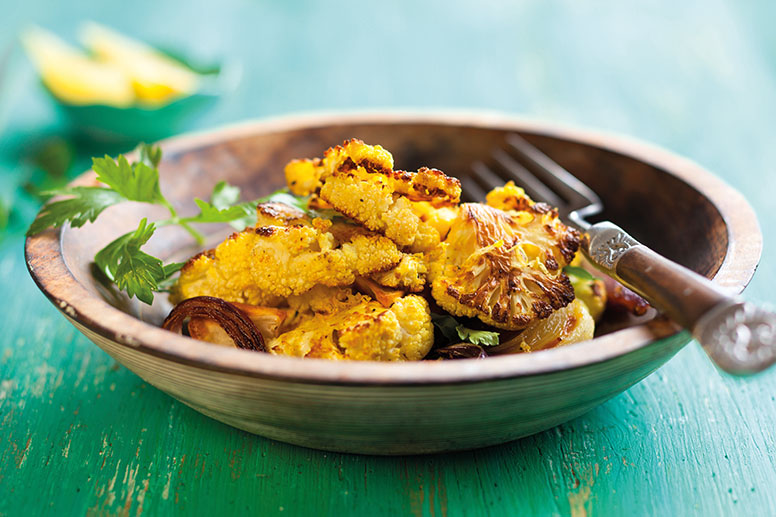Growing up it was hard to get excited about cauliflower. Thankfully it was a vegetable that featured rarely on the family menu. School dinners provided enough reason to avoid this odd-looking white brain-like vegetable when it was always boiled into indelicate submission, yielding to the point of a knife like a week-old balloon filled with noxious sulphurous fumes.
It was treated with a little more delicacy at home, but still it graced the table so rarely that I struggle to recall any specific incidences that succeeded in reversing the damage done to its reputation, in my eyes at least, at the hands of the school dinner ladies. How times change.
Recent years have seen the cauliflower rise inexorably up the ranks and become something of a king amongst vegetables, especially in the eyes of chefs – I might now go so far as to say that it is my favourite vegetable, both to cook and eat. It has become something of a running joke as to how many we manage to get through over the course of a week at The Hole in the Wall (around 30, if you must know).
This swift and significant volte-face has occurred for two simple reasons. Firstly, an understanding of just how versatile the cauliflower is in terms of how to prepare and cook it, and secondly, recognition of its incredible ability to pair with and complement other flavours.
When it comes to cooking a cauli the worst thing you can do is boil it. Steaming is marginally better, but to avoid the activation of the sulphurous compounds that give cauliflower (and all other cruciferous vegetables, for that matter) their notorious obnoxious odour, cook it using a dry heat or only minimal contact with water. Roasted cauliflower florets, brushed with garlic butter, seasoned with a little sea salt and finished with lemon juice straight from the oven are an absolute dream, but my favourite way to cook it is roasted whole, just like a chicken, along with brown butter and fresh herbs. Melt and lightly brown a generous amount of butter in a pan large enough to hold an entire head of cauliflower, season with salt and place a handful of fresh hardy herbs (rosemary, thyme, bay leaf – you get the idea) in the butter then place the cauliflower on top of the herbs. Cook it uncovered for five minutes or so then cover the pan tightly with foil and bake for 30 minutes before being mesmerised by the transformation.
The ability of the cauli to adapt to its surroundings is also an exciting seam of inspiration for the open-minded cook. As well as working famously with the aforementioned lemon and herbs, it will happily cohabit with spices: cumin, cinnamon and coriander make for excellent bedfellows, as in the wonderful Indian dish aloo gobi.
Alternatively head towards the Levant with sumac, oregano and olive oil roasted cauliflower with chickpeas. Finally, don’t forget the incredible affiliation it has with an aged cheddar, nutmeg and bacon for a cauliflower cheese with a delicious porcine twist to see you through those long January nights.

